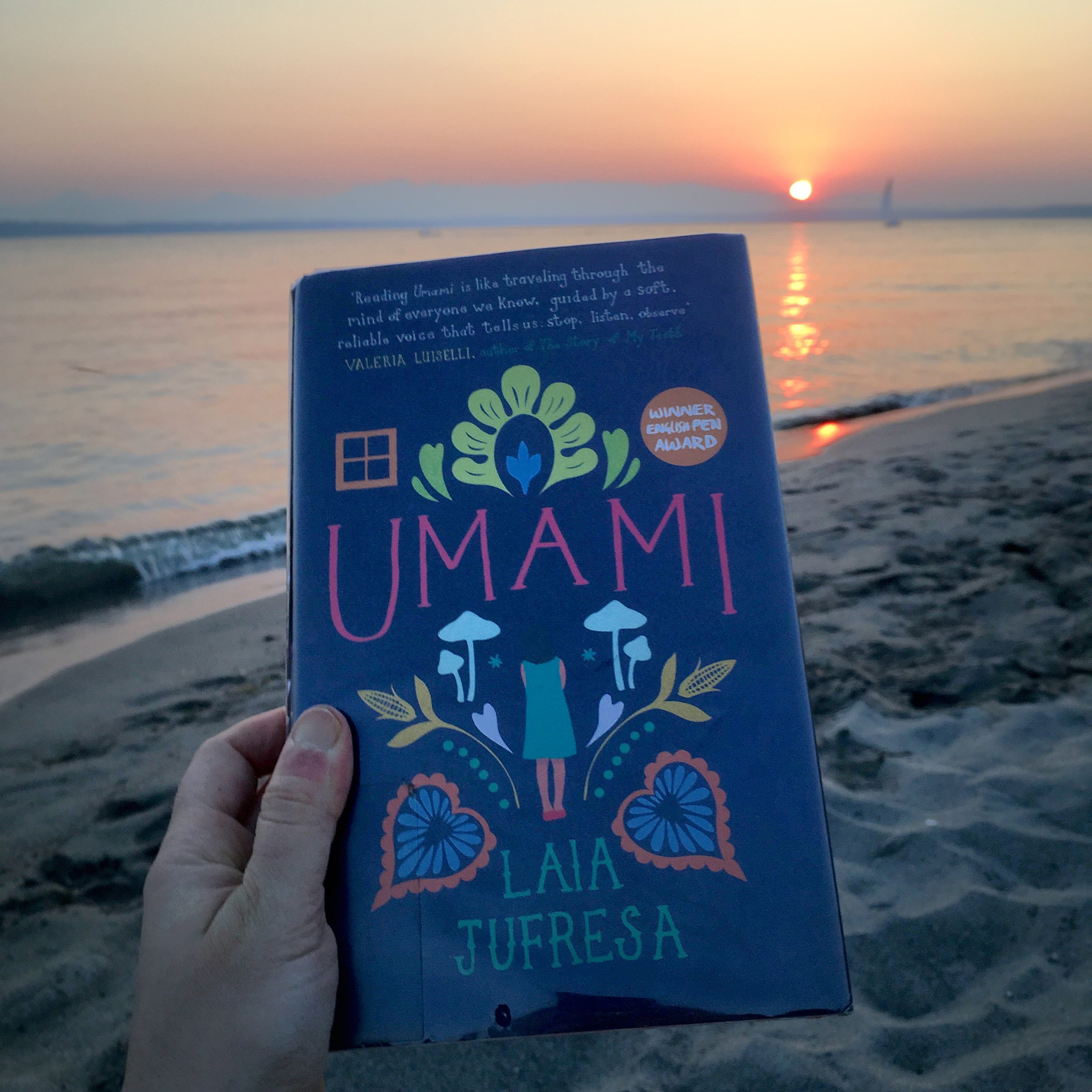 I first came upon Laia Jufrese's Umami (translated by Sophie Hughes) thanks to the Seattle Public Library's personalized recommendation system, Your Next 5 Books. Of the five books recommended, Umami zoomed to the top, as I have a soft spot for precocious 12-year-old narrators and an inclination toward foodie things. (You can see the whole list they recommended to me here.)Umami is not a food novel in the sense of Like Water For Chocolate (which is not a criticism of either book and is just an observation) and it doesn't just follow the travails of Ana, the Agatha Christie-gobbling, traditional Mexican-gardening tween. There are five narrators in this achronological story, each grappling with grief. Ana is creating a milpa in her parents' underutilized garden, part of the mews in which they live. Doctor Alfonso Semitiel, an anthropologist who studies pre-Hispanic food systems and brought the term "umami" to the Western world, owns the mews and lives there too. He named each of the houses of the mews after each type of taste: Sweet, Bitter, Sour, Salty, and Umami.Alfonso is a widower, Ana's little sister Luz mysteriously drowned two years before the novel opens, and Ana's friend Pina (named after the contemporary dancer Pina Bausch) and Pina's father Beto have been abandoned by her mother Chela. Ana, Alfonso, and Luz all narrate their own chapters in the first person. Pina and Marina, another resident of the mews who babysits Ana and who suffers from depression, are narrated in the third person. There's a lot going on here, and it took me a while to get into the flow of the book. Though I enjoyed Pina and Marina's chapters, Ana, Alfonso, and Luz were more compelling to me. Their wordplay was snappier (though Marina invents names for colors, like "obligreenation...Green out of obligation"), their interests more idiosyncratic. It's hard to feel close to every narrator, and the voices were not wildly different. Ultimately, what pulled me through was the mystery of Luz's drowning, gradually revealed through her narration, using the fairy tale-ish perspective of a five-year-old. The other hook came somewhat late in the book, two creepy AF dolls, one of which can breathe. The fabulist in me was charmed by this surprise, and they become quite a heartbreaking addition, in the end.
I first came upon Laia Jufrese's Umami (translated by Sophie Hughes) thanks to the Seattle Public Library's personalized recommendation system, Your Next 5 Books. Of the five books recommended, Umami zoomed to the top, as I have a soft spot for precocious 12-year-old narrators and an inclination toward foodie things. (You can see the whole list they recommended to me here.)Umami is not a food novel in the sense of Like Water For Chocolate (which is not a criticism of either book and is just an observation) and it doesn't just follow the travails of Ana, the Agatha Christie-gobbling, traditional Mexican-gardening tween. There are five narrators in this achronological story, each grappling with grief. Ana is creating a milpa in her parents' underutilized garden, part of the mews in which they live. Doctor Alfonso Semitiel, an anthropologist who studies pre-Hispanic food systems and brought the term "umami" to the Western world, owns the mews and lives there too. He named each of the houses of the mews after each type of taste: Sweet, Bitter, Sour, Salty, and Umami.Alfonso is a widower, Ana's little sister Luz mysteriously drowned two years before the novel opens, and Ana's friend Pina (named after the contemporary dancer Pina Bausch) and Pina's father Beto have been abandoned by her mother Chela. Ana, Alfonso, and Luz all narrate their own chapters in the first person. Pina and Marina, another resident of the mews who babysits Ana and who suffers from depression, are narrated in the third person. There's a lot going on here, and it took me a while to get into the flow of the book. Though I enjoyed Pina and Marina's chapters, Ana, Alfonso, and Luz were more compelling to me. Their wordplay was snappier (though Marina invents names for colors, like "obligreenation...Green out of obligation"), their interests more idiosyncratic. It's hard to feel close to every narrator, and the voices were not wildly different. Ultimately, what pulled me through was the mystery of Luz's drowning, gradually revealed through her narration, using the fairy tale-ish perspective of a five-year-old. The other hook came somewhat late in the book, two creepy AF dolls, one of which can breathe. The fabulist in me was charmed by this surprise, and they become quite a heartbreaking addition, in the end.
